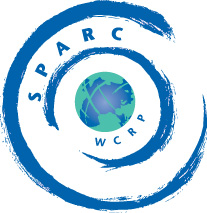 |
Stratospheric Processes And their Role in Climate
|
||||||||
| Home | Initiatives | Organisation | Publications | Meetings | Acronyms and Abbreviations | Useful Links |
![]()
 |
Stratospheric Processes And their Role in Climate
|
||||||||
| Home | Initiatives | Organisation | Publications | Meetings | Acronyms and Abbreviations | Useful Links |
![]()
Update
The SPARC Polar Stratospheric Cloud Assessment
The SPARC Polar Stratospheric Cloud Assessment (SPA) has kicked off with a chapter scoping meeting at the Coolfont (Spa) resort in West Virginia, USA from 12-13 May. The meeting was kindly hosted by our local organiser Mike Fromm of the US Naval Research Laboratory (NRL).
The aim of SPA is to assess our understanding of polar stratospheric clouds (PSCs). The motivation for the assessment is that there remain genuine gaps in our understanding of PSC distribution, formation and long term change that are important to stratospheric chemistry. Our understanding is patchy and specific rather than global and integrated and there has been a tendency to undertake detailed process studies rather than integrative studies. There is also no consensus on how to describe PSCs and denitrification in global models, which means we are unable to reliably predict changes that might occur in a future stratosphere. An important factor that limits our understanding is the lack of a large-scale consistent and evaluated dataset for model testing, the creation of which is one aim of SPA.
The purpose of the meeting was to agree on the organisation of the chapters and distribute writing tasks. We also managed to create an additional chapter on meteorological processes and agreed to produce a “Twenty Questions and Answers About PSCs” document for the stratospheric community, along the lines of David Fahey’s excellent WMO Ozone Assessment pamphlet. If written well, we believe that such a document will allow the stratospheric community to better comprehend the rather acronym burdened world of PSCs.
The chapters are as follows:
SPA has ambitious aims that go beyond a straightforward review of understanding. A 10 month period was felt to be essential for all participants to make substantial progress, particularly in cases where large datasets need to be assembled and analysed. Our next meeting is planned for early spring 2006 in Europe.
Co-chairs: Ken Carslaw, University of Leeds, UK (carslaw@env.leeds.ac.uk)
Katja Drdla, Ames Research Centre, USA (Katja.Drdla-1@nasa.gov)
Meeting participants: Chapter lead authors (Niels Larsen, Gloria Manney, Terry Deshler, Lamont Poole, Beiping Luo, Mike Fromm, Michelle Santee, Gerald Nedoluha, Richard Bevilacqua) and coauthors (Harald Flentje, John Remedios, Christiane Voigt, Hideaki Nakajima, Jerome Alfred, Tony Strawa)
![]()